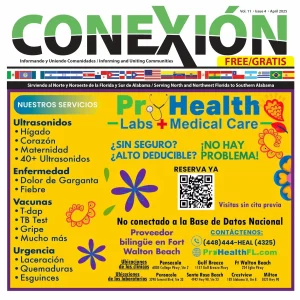By Martin Owen
The tourism calendar for 2019 is moving on fast. We’ve been through the Snowbird Season, which started around the end of November and really gets into stride after New Year. As the Snowbirds begin to go back to northern climes, the Spring Breakers start to arrive, and the families who come for Easter will be packing their suitcases. Before we know it, Memorial Day will be here and then… the peak season for the Northern Gulf Coast starts.
I have the honor to sit on one of the local Tourist Development Councils and get to see the in-depth figures reflecting the changes and developments to tourism in the region. This is slightly different than the impressions those of us in the business get from interaction with our own guests. Those impressions can be misleading unfortunately. If you work in a hotel, your guests may not reflect what is actually happening. For example, you may see a large number of visitors from a particular area and assume that they represent the main source of our tourists. A number of CVBs along the coast have made those assumptions in the past, but with better research methods these days tourist organizations, accommodation providers, and tour companies can now not only see from where visitors originate, but which ones spend more money, who stays the longest, how far in advance guests book their vacations, and countless other statistics.
These ‘metrics’ as they are termed allow the industry to better target their advertising and resources. They can also choose to make informed decisions about attracting the tourists who fit best with the needs of the local communities.
Let me give you an example that affects the whole of the Northern Gulf Coast. We assume that the visitors who come in the 90 days of summer—between Memorial Day and Labor Day—are the ones to whom we should advertise. In fact, most of those visitors need no advertising. They know about our destinations and have been coming for years. Far from booking many months in advance, the Peak Travelers seem to be making their plans later to see if they can get any sort of discount. On arrival, they spend most of their time on the beach, and—as they are predominantly families—often eat many of their meals in the condos rather than restaurants. We also find that they come from the same cities that they always have, although this does depend on which areas they are heading for. South Alabama, Pensacola, Navarre, Destin, South Walton and Panama City Beach draw visitors from the South East of the USA, but each appears to have a slightly different origin market: Atlanta, Birmingham, Houston, Dallas, etc., etc.
Research seems to show that the guests who visit outside the summer peak appear to be different. They tend to stay longer for a start, and appear to spend more. They originate in ‘new markets,’ often flying in rather than driving here. When they are with us, they eat in restaurants more frequently and spend money in stores. Unlike summer visitors, these tourists travel to different destinations so they need to be attracted by our advertising. It makes sense for our CVBs to concentrate on these out of peak season, higher spending, longer staying guests and—along the coast—that’s what is happening.
Of course, that doesn’t mean anyone is ignoring our traditional and loyal tourists. They are almost like our family anyway. The Snowbirds are a great example of this. I spoke to a group of Snowbirds some time ago and was asking where they were from. One of them said they were from Ohio, but he was corrected by another who said they felt they actually lived on the Gulf Coast, and they spent their summers in Ohio!
So, like our summer families and our Spring Breakers, the ‘Birds’ have a long tradition of visiting this bit of Paradise. Long may that continue.



